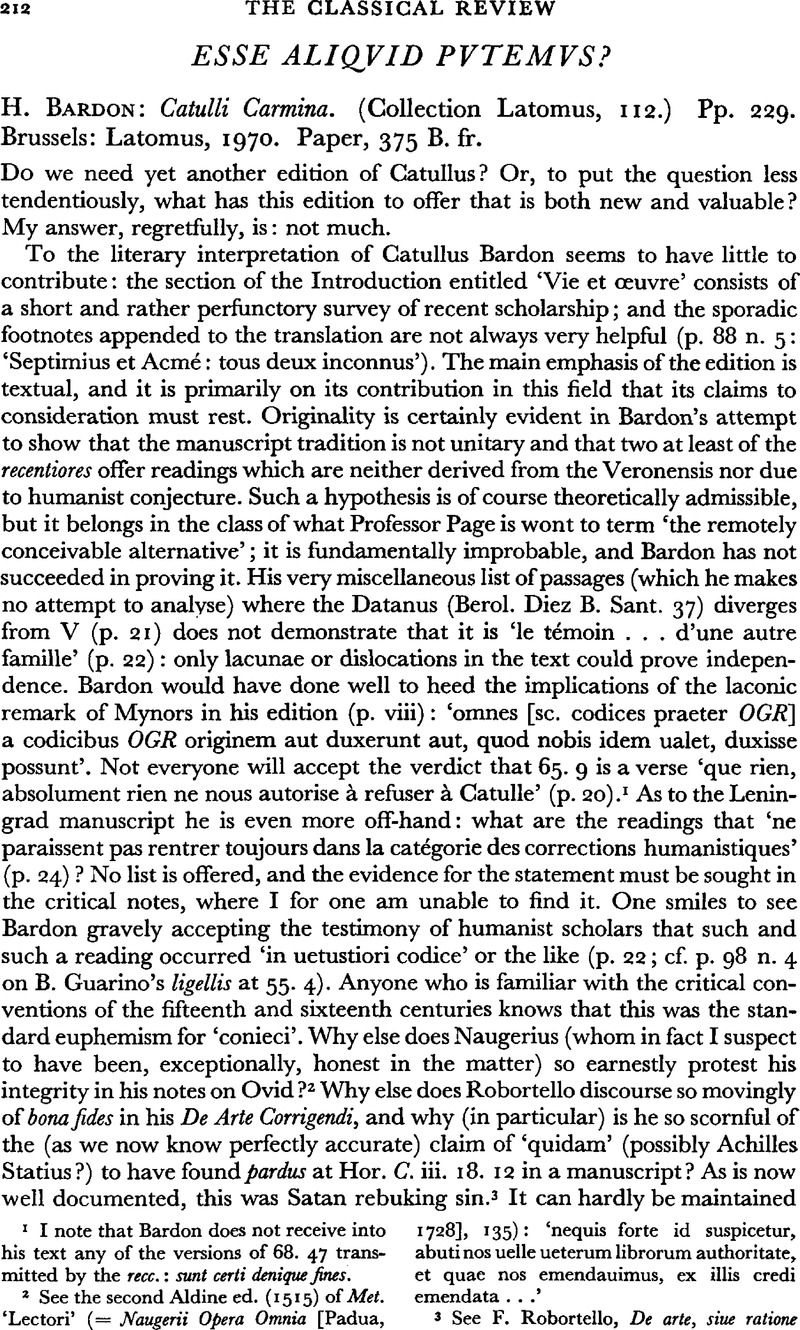No CrossRef data available.
Published online by Cambridge University Press: 27 February 2009

page 212 note 1 I note that Bardon does not receive into his text any of the versions of 68. 47 trans-mitted by the recc.: sunt certi dmique fines.
page 212 note 2 See the second Aldine ed. (1515) of Met. ‘Lectori’ (= Naugerii Opera Omnia [Padua, 1728], 135): ‘nequis forte id suspicetur, abutinos uelle ueterum librorum authoritate, et quae nos emendauimus, ex illis credi emendata …’
page 212 note 3 See F. Robortello, De arte, siue ratione corrigendi veteres Authores, disputatio (Padua, 1557), fols. 2v, 7v–8 (= J. Gruter, Lampas, ii [1604], 18, 27);cf. A. Dain,Les Manuscrits 2 (1964), 162–3; A. Carlini, L'attività filologica di Francesco Robortello (1967), 22. On the delinquencies of H. Stephanus in this department see B. A. van Groningen, Traité d'histoire et de critique des textes grecs (1963), 70. This question of fides still bulked large in the next generation: see G. Scioppius, De Arte Critica (1662), **4–4v.
page 213 note 1 It is as well to observe the strict Madvigian convention that there is ex hypothesi only one archetype in a tradition,
page 213 note 2 This is not to deny this information historical value when it is properly used, e.g. to establish a stemma editionum: see the instructive Texte et apparat of A. Severyns (C.R. Lxxvii. 288–90).
page 213 note 3 Cf. the rejection of an easy remedy at 64 334 umquam tales. On hiatus see the important discussion by G. P. Goold, Phoenix, xxiii (1969), esp. 191–3.
page 213 note 4 See now O. Skutsch, B.I.C.S. xvi (1969), 41.